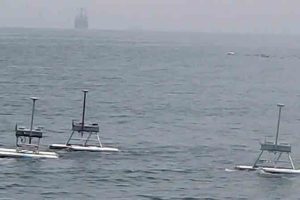global positioning system
Lightweight GPS tags help researchers track animals of all sizes
GPS tracking has shown its utility for wildlife studies, and now, development of light-weight GPS tags will allow researchers access to information about a broader range of small- to medium-sized animals than was previously available, according to a st…
GPS not working? A shoe radar may help you find your way
The prevalence of global positioning system (GPS) devices in everything from cars to cell phones has almost made getting lost a thing of the past. But what do you do when your GPS isn’t working? Researchers from North Carolina State University and C…
Should Memphis Build for California Style Earthquakes?
The federal government is urging Memphis and other parts of the Midwest to adopt a new building code that would make buildings as earthquake resistant as those in southern California, where shaking is much more likely to seriously damage a building. A new study by researchers at Northwestern University, the Reaves Firm in Memphis, and Los Alamos National Laboratory finds that the prescribed measures for the Midwest’s New Madrid seismic zone (NMSZ) would cost far more than the damage prevented. The New Madrid seismic zone includes parts of Tennessee, Kentucky, Missouri, Arkansas, Illinois, Indiana, and Mississippi.
New tractor chomps up land mines on farm land
Unexploded anti-personnel landmines litter the border between Croatia and what was once Yugoslavia. The mine-infested area spans more or less half of the country and roughly 1,700 km2 of minefields are left to clear. EUREKA’s first foray into anti-personnel landmine technology, the ORACLE project has developed a rugged tractor for clearing mines and unexploded shells from agricultural land. Adapted from a conventional forestry vehicle, the ORACLE system is cheap, quick, reliable – and safe.
Lobsters navigate with magnetic positioning system, study shows
Spiny lobsters possess a remarkable navigational sense based on an ability to read small variations in the Earth’s magnetic field, experiments conducted by North Carolina scientists show. The new work is the first to demonstrate that at least some invertebrate animals, which many people consider primitive underachievers biologically, possess navigational skills rivaling those of sea turtles and homing pigeons.
Navy wants ‘affordable’ weapons for war on terrorism
Cruise missiles have proven themselves in combat many times since the Gulf War, but the Navy would like to drive their cost down–the ones currently in service cost hundreds of thousands of dollars. The Office of Naval Research (ONR) has a program to use commercially-based equipment to build a “cruise-like” missile with good performance at a price ten times less than the norm. The new missile is called, appropriately, the Affordable Weapon.
GPS takes piloting to new level of accuracy
NASA has developed a way to pilot aircraft independent of local navigational aids, infrastructure and even good ol’ landmarks. The NASA Global Differential GPS system at NASA’s Jet Propulsion Laboratory has demonstrated the ability to achieve real-time aircraft positioning accuracy of 10 centimeters horizontally and 20 centimeters vertically, anywhere in the world. Think of it this way: Using the NASA system, a pilot could remotely navigate an unmanned aircraft from, say, Atlanta, Georgia and have it land within three inches of its target in Tokyo, Japan.
Device gives smart bombs a headache
 Plans for GPS-guided bombs to do much of the heavy lifting in a U.S. war on Iraq could be seriously hampered by a $40 device available over the Internet. As reported by the Wall Street Journal, so-called global positioning system “jammers” can interrupt the system’s satellite signal. “At the Paris Air Show in 1999, a Russian company called Aviaconversia demonstrated a 4-watt GPS jammer, weighing about 19 pounds, capable of denying GPS reception for more than 100 miles,” the paper says. “While we do not know the extent of our vulnerability, there is evidence to suggest that GPS jamming can significantly inhibit precision targeting,” says Rep. Joseph Pitts (R., Penn.), co-chairman of Congress’ Electronic Warfare Working Group. So far the only known fix is to boost the GPS signal strength. But without new satellites in place, there’s only so far that approach can go.
Plans for GPS-guided bombs to do much of the heavy lifting in a U.S. war on Iraq could be seriously hampered by a $40 device available over the Internet. As reported by the Wall Street Journal, so-called global positioning system “jammers” can interrupt the system’s satellite signal. “At the Paris Air Show in 1999, a Russian company called Aviaconversia demonstrated a 4-watt GPS jammer, weighing about 19 pounds, capable of denying GPS reception for more than 100 miles,” the paper says. “While we do not know the extent of our vulnerability, there is evidence to suggest that GPS jamming can significantly inhibit precision targeting,” says Rep. Joseph Pitts (R., Penn.), co-chairman of Congress’ Electronic Warfare Working Group. So far the only known fix is to boost the GPS signal strength. But without new satellites in place, there’s only so far that approach can go.



